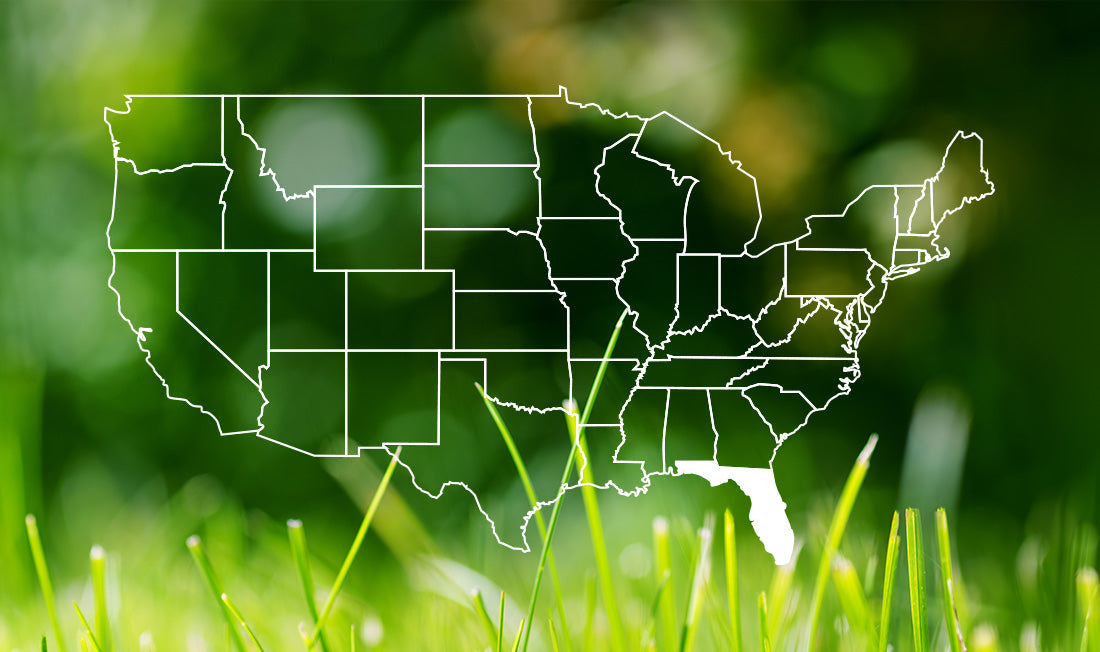In Florida, caring for your lawn during winter is most greatly affected by your location within the state. For the sake of this article, let’s break the state of Florida up into 3 sections from north to south, and just arbitrarily call them North, Central, and South, Florida. During the winter, we can think of these three locations and the grasses there as dormant, semi-dormant, or actively growing, respectively. Let’s take a closer look at winter fertilization and what you should or shouldn’t be doing depending on where you’re located in FL.

Can I apply products to my Florida lawn in December?
To answer this, let’s think about what affects the growth of our grass most significantly, temperature and sunlight. Warm-season grasses like those in Florida, love the heat and the sun. During the winter, days will be shorter and temperatures will be cooler, on average. This means the growth potential of your grass is much lower than during the long, hot summer days. A plant that is not growing as vigorously requires fewer nutrients to sustain itself. So if we think of our location within the state, fertilizing a Florida lawn in December really probably only makes sense in South Florida. North and Central Florida lawns at this time will have a reduced capacity for nutrient absorption, meaning that your fertilizer application will likely not end up reaching its intended target, but rather in the streams surrounding your neighborhood. So when it comes to applying products with nitrogen, phosphorus, or potassium, it’s best to just hold off until the spring. If you’re in Miami and your grass is really not behaving much differently than during the summer, then maybe a fertilizer application could be rationalized.

Some things that can be applied during the winter are products designed to nourish the soil, rather than directly fertilize the lawn. Products like SLS Root Hume, Soil Hume, and Sea Hume are great as part of a year-round soil health program. Definitely hold off on applying products that are high in nitrogen at this time. If you really feel the urge to help condition your soil during the winter, an application of any of the three conditioners previously listed would be a great idea.

Is my lawn dormant or dying?
Dormancy is a natural process that helps grasses survive periods of stress, like hot, dry weather or cold, winter weather. During dormancy, the grass goes into a resting state, and growth slows down or stops completely. In North and Central Florida, warm-season grasses can go dormant during the cooler months of the year. If you’re in South Florida and your lawn has gone uniformly brown, it’s likely that this is not due to winter dormancy (unless you’ve just had record-low temperatures for a few days in a row), and you should start looking into reasons for the off-color grass.
Remember, dormant lawns don't need fertilizer because the grass isn't actively growing. Applying fertilizer to dormant lawns can actually do more harm than good, since it can leach into groundwater and runoff into surface water, where it can pollute the environment. So if your lawn is uniformly brown and crispy, resist the urge to fertilize! Just wait until the grass starts to green up again in spring. Then, you can start fertilizing according to the directions on the fertilizer label. If you’re noticing blotches of brown or dormant turf, this could be a sign of two potential issues, 1) you have multiple species of grasses (or weeds) growing in your yard, or 2) your lawn has a disease and requires some changes in management practices to help the grass fight back against the pathogen infecting it.

If you still have questions regarding winter care for your Florida lawn, contact us today and our friendly lawn experts will be happy to assist you.









